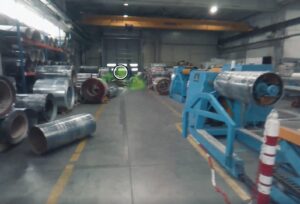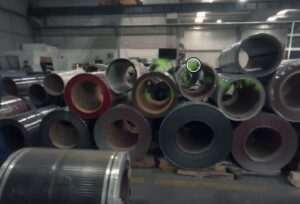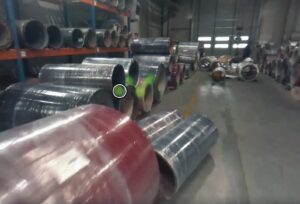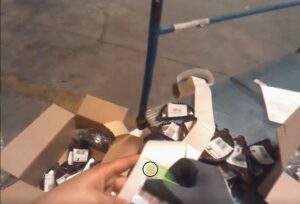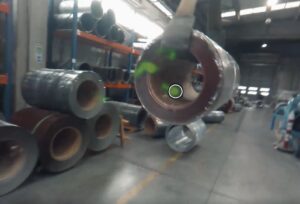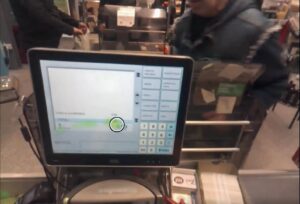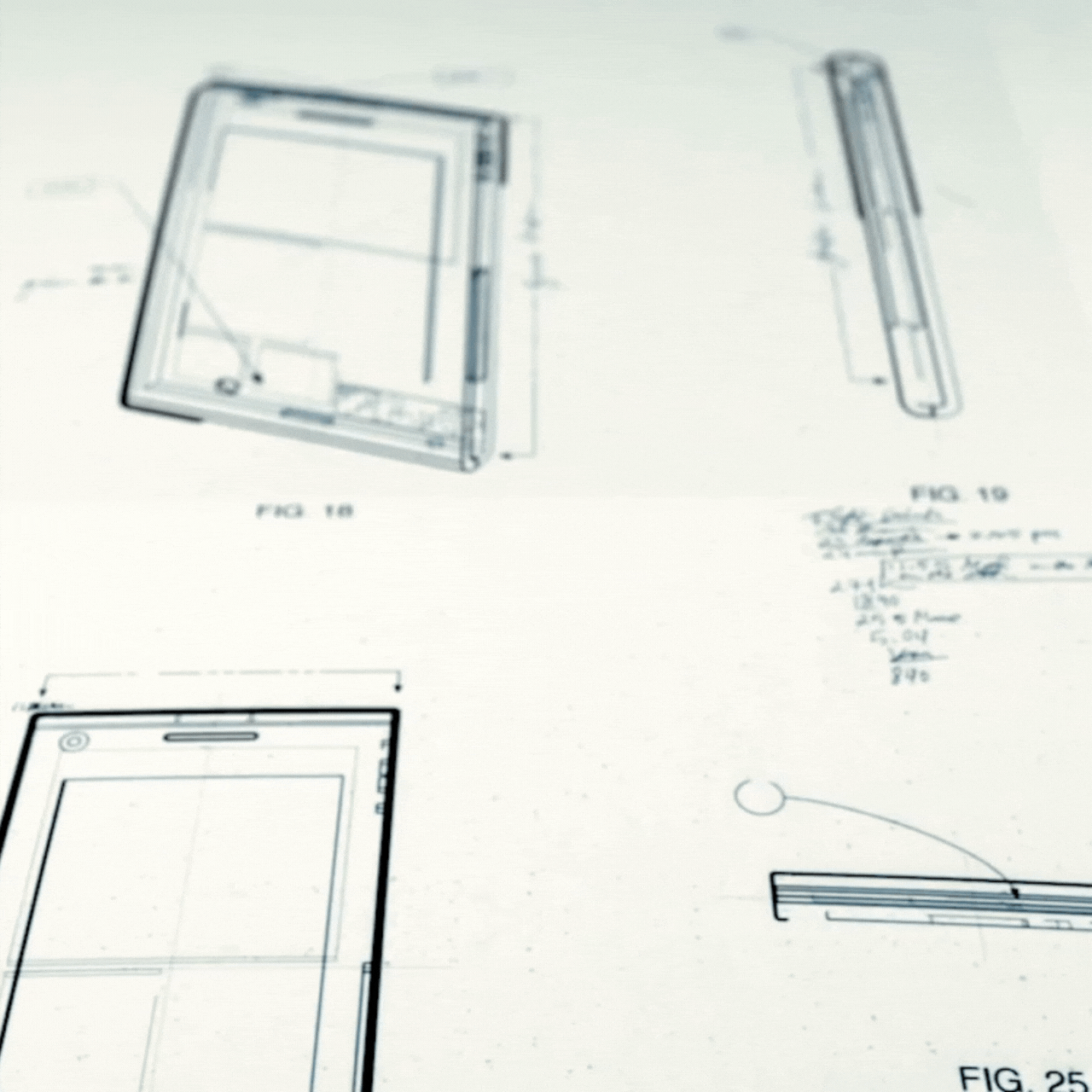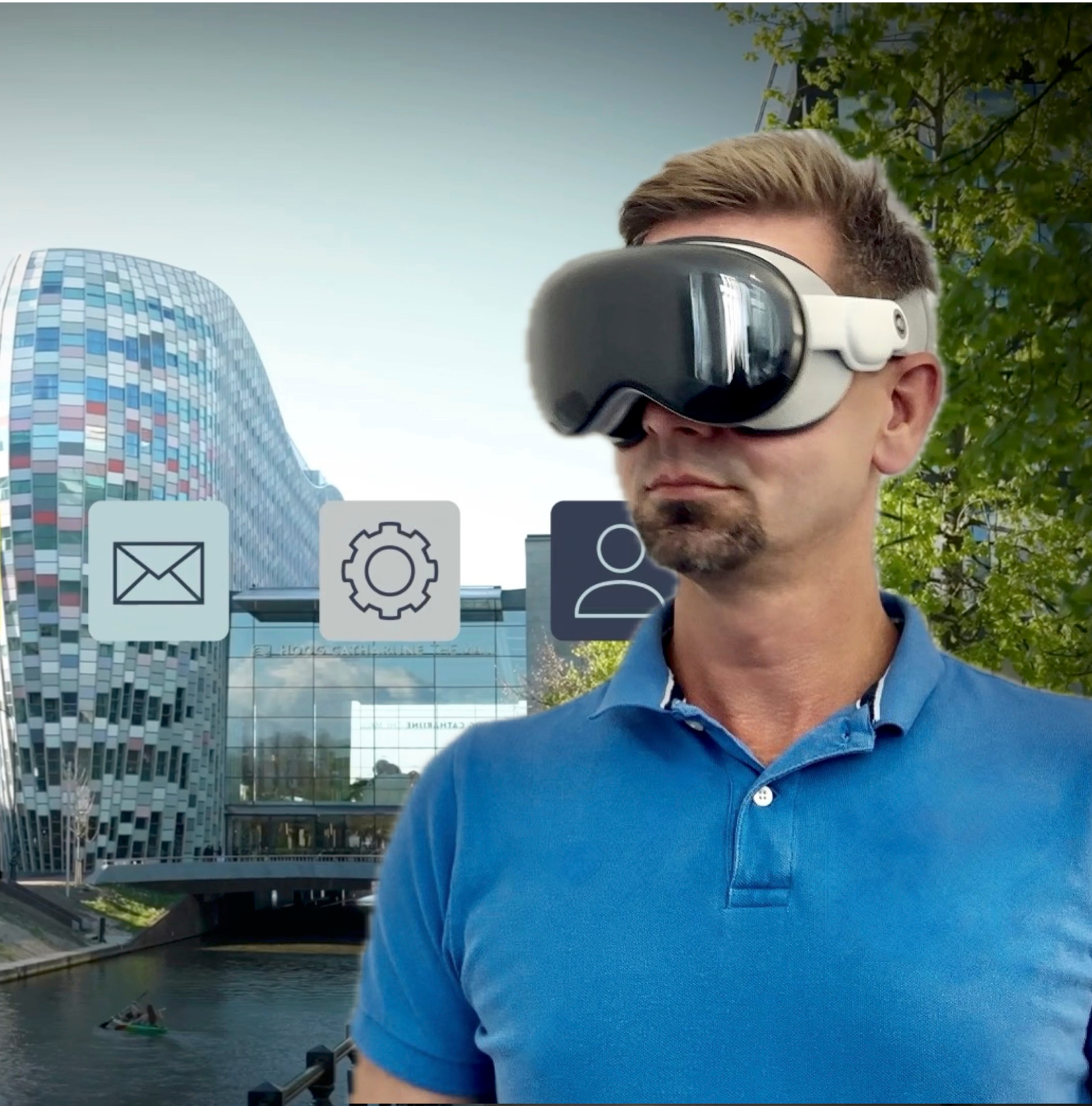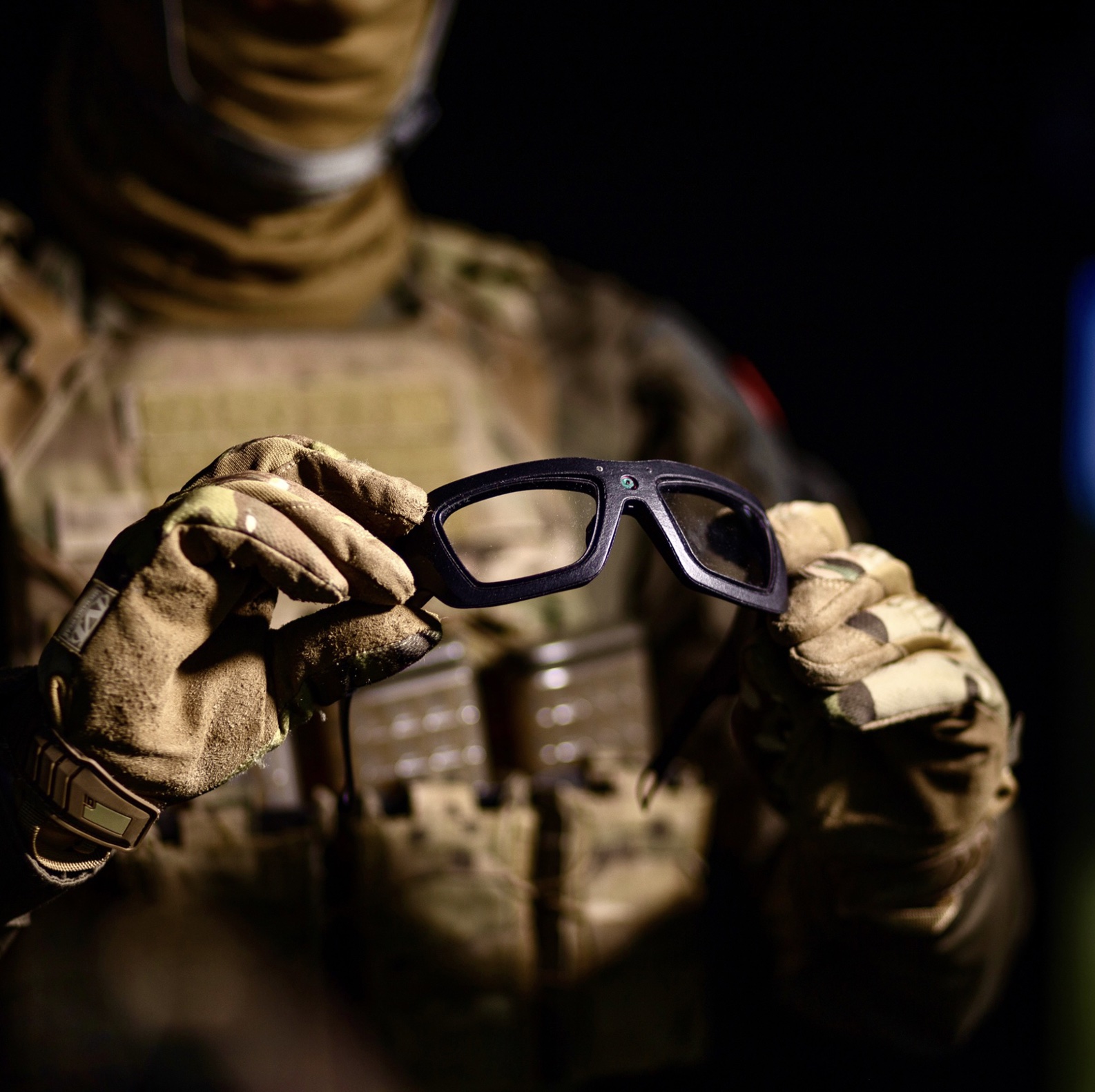HOW SMART GLASSES CAN HELP COMPANIES TRANSFORM WORKFLOWS AND UNCOVER OPERATIONAL INEFFICIENCIES
Andrei, you work with companies in manufacturing, logistics, and beyond — what kinds of challenges do you typically help clients solve?
Each company faces different challenges, whether in manufacturing, retail, or services. That’s why we use a “freemium” approach: clients walk us through their most pressing issues and high-cost processes, and we start from there.
We then use smart glasses to map two key processes — a method that quickly reveals bottlenecks. Once we identify them, we quantify the impact of improvements and present the findings.
For example, one of our clients in the manufacturing sector was facing a productivity issue – their performance was just above 70%. At the time, they were only tracking machine utilization, not operator behavior. Through process mapping, we discovered that 25% of operators’ time per shift was spent preparing raw materials and setting up equipment. More interestingly, after using a material, operators would place it randomly wherever they found space, instead of following a defined storage system. The next operator, although the system showed the material as available, spent 15–20 minutes searching for it — often socializing with coworkers in the process. If the material wasn’t found, they’d request new stock from the main warehouse.
By simply implementing a standardized storage and identification system for high-use materials and reducing distractions at the production line, we increased hourly output by 18%.
You’ve been using smart glasses in your projects for a while now. What initially drew you to trying them out — and what role do they play in your work today?
I was looking for ways to differentiate and scale. Consulting in management and project delivery is inherently difficult to scale — revenue is tightly tied to billable hours, which limits growth and increases operational pressure.
I’d been following both eye-tracking and EEG technologies for a while and realized that smart glasses could help me analyze processes and identify improvement opportunities much faster and more cost-effectively. We replaced traditional “Day in the Life” (DILO) studies with eye-tracking glasses worn directly by the operators.
Most importantly, we eliminated subjectivity. Now, we work with hard, objective data rather than subjective consultant interpretations. Looking ahead, we aim to stream real-time data from the glasses and other devices into a platform that can analyze information in both isolated and integrated ways — to speed up insight generation and solution design.
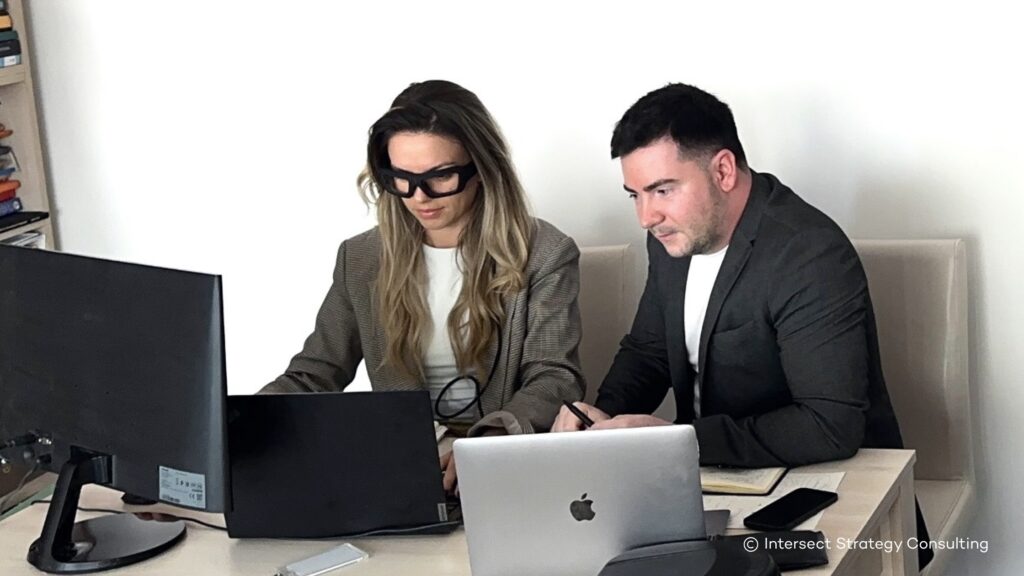
What are your top 3 most valuable use cases for smart glasses?
We’ve used the VPS glasses in a wide range of projects — from consumer behavior studies and production line analysis to UX testing aimed at reducing queue times by tracking cashier activity. We’ve also applied them in warehouse operations like picking and replenishment, and even in a cold storage facility for fish gutting, where excessive overtime was a major issue.
While traditional use cases like neuromarketing or training are well-known, we intentionally test the glasses in less conventional scenarios. We don’t always know what we’ll find — and that’s exactly the point. Challenging assumptions is how we differentiate ourselves and explore new paths to scalability.
There are countless scenarios where this technology can create real impact — many of them less conventional. Beyond traditional applications like neuromarketing, research, or training, we deliberately test the glasses in less explored scenarios. We don’t always know what we’ll find — and that’s exactly the point. Challenging assumptions is how we differentiate ourselves and explore new paths to growth.
If I had to highlight the top 3 use cases so far, these stand out:
- Process mapping and bottleneck identification
- User Experience — beyond digital UX, across physical and operational touchpoints
- Education — my students at Politehnica University Bucharest are always fascinated when they see how this technology translates into real-world applications
Many of your projects start by closely observing how people actually work. Why is direct observation such a powerful starting point for understanding inefficiency?
There has been a strong global push toward digitalization and automation for years, but in reality, not all activities can be digitized or automated, at least not fully, due to technology limitations or high costs. Human labor still plays a key role, especially in Romania and Eastern Europe.
We focus on companies that haven’t fully automated yet and want to know whether digitalization or automation would truly bring sustainable results. From the first conversation, I make it clear to leadership that I work directly with the frontline — the people doing the actual work. They know the processes, shortcuts, and challenges better than anyone.
By involving them directly and co-creating solutions, we increase adoption and sustainability, and we reduce resistance to change. Internal specialists often have the answers — we just give them the tools and structure to surface those answers and implement them effectively.
Can you share a moment when the insights from the glasses led you to reconsider your original assumptions about a process or layout?
Yes – a recent example stands out. We were analyzing workload across several support departments. One team in particular, Back Office, appeared to be understaffed, and we initially considered recommending a headcount increase.
Before finalizing our suggestion, we used the glasses to understand the actual tasks. We discovered that over 40% of their time was spent processing orders, which sounded normal until we saw how they did it. They received unstandardized order forms in PDF format and manually retyped the information into the company’s CRM. This not only consumed time but also triggered frequent delays due to repeated clarifications with clients and sales reps.
By automating and standardizing the order placement process, we freed up significant time, improved efficiency, and boosted employee satisfaction within the team.
From your perspective, what makes a company a strong candidate for adopting smart glasses—openness to innovation, digital readiness, or other factors?
Ideally, yes – openness to innovation and change is key. But in today’s context, given the political and economic instability across Europe, the main driver for many companies is cost reduction. And that’s perfectly valid.
To stay competitive, companies are forced to identify and eliminate resource-heavy activities. We typically start with a process-level analysis and continue department by department — because everything is interconnected. Production links to logistics, which links to commercial, which connects to finance, customer care, and marketing. We look at the full picture.
User acceptance is crucial when introducing new technology into a company. What helps frontline employees feel comfortable wearing smart glasses and embracing the technology in their daily work?
One major concern we always address is GDPR and employee comfort. We take a transparent, professional approach — we clearly explain the purpose, show the employees what we’re seeing, and share the results with them first. This builds trust and long-term relationships.
We also collect feedback every quarter to adjust our approach. It’s not always easy, but we believe that, in time, more companies will see the value of using eye-tracking technology for audits and process analysis.
Looking ahead, what digital advancements do you think companies will need over the next 3–5 years to stay competitive?
In the next few years, companies will need to move beyond surface-level digitalization and embrace smart, integrated digital ecosystems. Real-time, data-driven decision-making will become essential. It’s not enough to collect data, companies must be able to interpret it meaningfully and act fast. This will require the ability to connect data streams across departments in a way that breaks down silos and creates agility.
Equally important is the adoption of automation, driven by a blend of AI, IoT, advanced sensing technologies, and drones. But automation will go beyond task execution, it will reshape entire workflows and unlock new efficiencies. Companies will need systems that not only automate but also analyze and suggest optimizations in real time.
At Intersect, we follow the same approach we recommend to our clients. We’re scaling both locally and internationally, and we’re developing an AI-integrated platform that processes data from eye-tracking glasses, drones, and RFID systems. The goal is to go beyond analysis and deliver intelligent, actionable recommendation for improvement.
By automating more of the analysis phase, we free up human resources to focus on what matters most: implementation and transformation. This will help our clients — and ourselves — to become faster, more flexible, and more scalable in a constantly changing environment.
